The Louvre that we know today owes a lot to Napoleon. More for its arrangements than for works looted from foreign nations during negotiations conducted under the Directory and the Empire. Contrary to what one might think, Napoleon Bonaparte was not the inventor of this new way of enriching the victorious country.
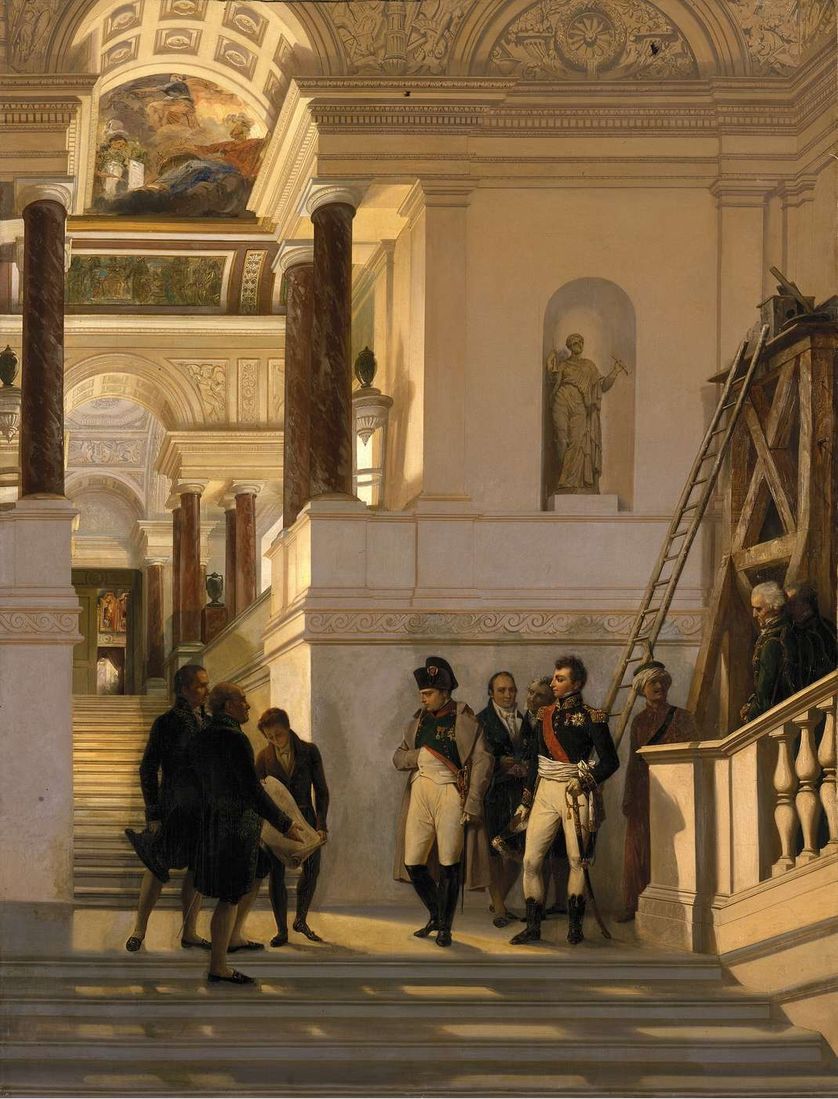
The Louvre Museum: An Old Project
Louis XIV abandoning the city palace for the pleasant attire of the near Parisian suburbs, the Louvre became from the second half of the 17th century a huge space of possibilities. It is first and foremost a repository for works of art belonging to the crown and accommodates the king’s artists in several apartments and workshops. Then regularly in the eighteenth century, the idea returns to make this palace a real museum. Diderot in the Encyclopédie makes a display of his talents as an interior designer:
We would like, for example, that all the ground floors of this building were cleaned and restored to porticoes. They would serve these porticos, to store the most beautiful statues of the kingdom, to collect these kinds of precious works, scattered in the gardens where one does not walk any more, & where the air, the weather & the seasons, lose them & the ruin. In the part located to the south, one could place all the king’s paintings, which are presently piled up & confused together in storage units where no one enjoys them. We would put the gallery of plans to the north, if there were no obstacles there. We also transported to other places of this palace, the cabinets of Natural History, and that of the medals.
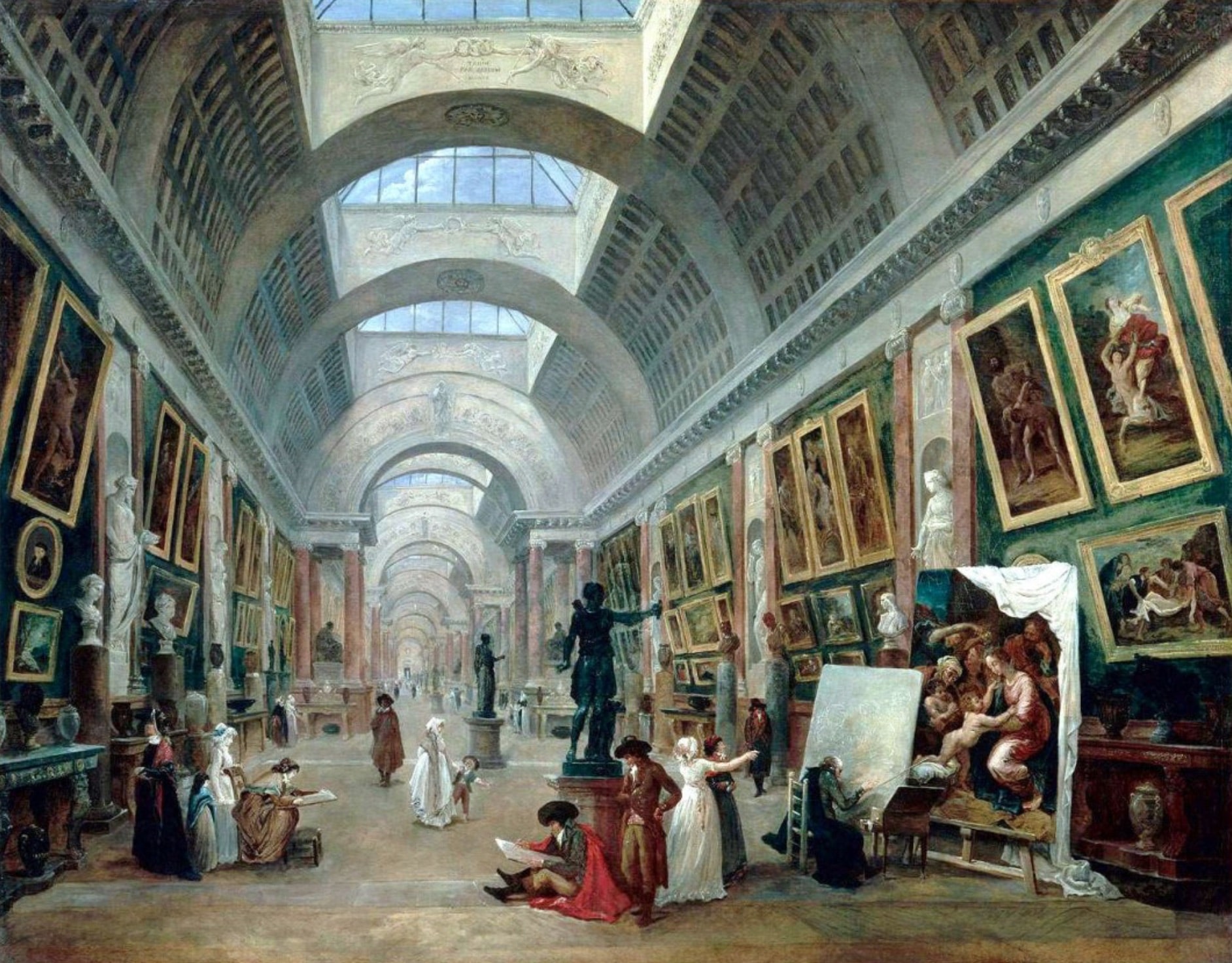
In the 18th century, the Museum project really took shape and the Louvre hosted the Salon in 1725, which became biennial in 1751. We know the Salon obtuse because it only presents in its beginnings the paintings of the members of the Academy of Painting; however, it will eventually gain in flexibility in the 19th century. The Revolution suspended the progress of the project before the revolutionaries seized it, transforming the Louvre into the Central Museum of the Arts of the Republic. The funds of the new institution are generously supplied by the Crown artworks as well as those confiscated from the clergy and emigrants.
Freed in the blood of the monarchy and its tyrannical power, France now claims to be the pure and marmoreal generation of ancient and democratic regimes. Argument largely sufficient in its Republican eyes to consider itself legitimate to monopolize the masterpieces of Antiquity and the High Renaissance. The machine is launched and the orchestrated and systematic looting of neighboring countries at war against the Nation is initiated by a clever novelty: the war indemnities of the vanquished are now largely paid in the form of works of art. The Directory (1795 – 1799) does not deny this heritage and even encourages this cunning practice.
In 1796, written orders from the Directory encourage the young General Bonaparte not to skimp on spoliations:
The Executive Directory is convinced that you will regard the glory of the Fine Arts as attached to that of the Army which you command. Italy owes them much of its wealth and fame: but the time has come when their reign must pass in France to strengthen and embellish that of Liberty.
And it goes without saying that Bonaparte is doing it. It will even push the legitimization of these spoliations (modestly designated as “confiscations”) by treaties signed with the vanquished. And if “Napoleon flies like thunderbolt and strikes like lightning”, the cities in the process of being bled dry also feel his arrival. Thus in Florence in October 1800, everyone knows the Napoleonic troops approaching, which is why people are busy at the Uffizi. The director Tommaso Puccini (1749 – 1811) organizes the flight of the most famous artworks of Tuscany. The ones he can save anyway. Because Tommaso knows the gargantuan spoliations carried out in Venice and Rome. He also knows that once they reach Paris, the works will perhaps be presented on floats parading as on July 27th and 28th, 1798. The most beautiful treasures of Italy as prisoners of war before joining the Louvre and the gazettes titling:
Greece ceded them, Rome lost them. Their fate changed twice, it will not change.

These Dantesque visions give Tommaso the energy of despair and the director of the Offices to redouble his efforts. Carefully packaged in 75 cases, the artworks are loaded onto boats moored on the banks of the Arno; one of the most extraordinary convoys in history goes discreetly to Livorno where a British frigate awaits it. Once loaded, the ship sets sail for Sicily, protecting some of the greatest Italian masterpieces from Napoleonic appetites. Yet the Venus Medici discreetly installed in Palermo was finally summoned – under diplomatic pressure – to join Paris in 1803. It did not find Florence again until 1815. The looting was so traumatic in Italy that it gave birth to a proverb:
Non tutti i francesi sono ladri, ma Buonaparte sì.
(All the French are not thieves but a good part (Buonaparte – Bonaparte), yes.)
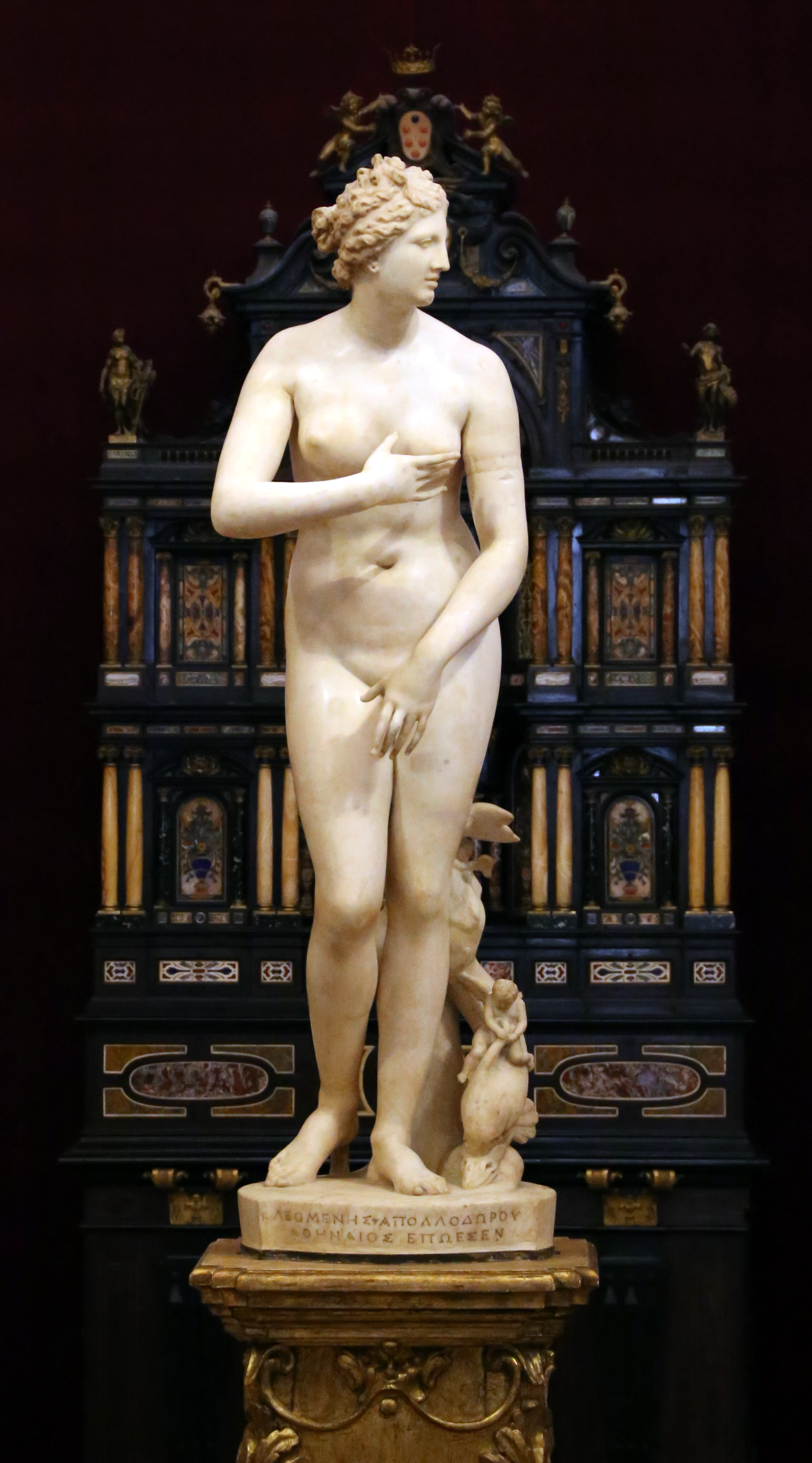
The Napoleon Museum
Once brought to power, Napoleon made the Musée central des arts de la République into the Musée Napoléon. A more concise name – and a little more narcissistic too – for a collection which has grown handsomely in a few years. The ambition to make the Louvre a universal museum borrows as much from the Enlightenment as from Bonaparte’s ambition to make Paris a new Rome. Fashion has been antique since the second half of the 18th century. The Revolution and the establishment of the Republic reinforced this feeling. The Empire wants to be like the consecration of this idealized impulse towards a rediscovered political and aesthetic purity.
However, we do not know anything about Napoleon Bonaparte’s training in the arts. No doubt he was initiated in Brienne, no doubt he read a lot on the subject , as was his habit. Did he have a penchant for the arts or simply a perfect awareness of their capital importance in establishing political and dynastic legitimacy? Again, we ignore it. Far too busy in negotiations, he was not one of those who selected the masterpieces to be moved. To help him, he was accompanied by specialized commissions formed by intellectuals and specialists in the history of art who identified, selected and located the works that were to leave for Paris. All these spoliations were perfectly organized and on an unprecedented scale.
Italy is not the only one to suffer from this looting. Prussia, Austria, Egypt, Spain and Belgium were combed through. Egyptian cargoes have an unexpected fate, confiscated by the English who transport them to London. Today, several of these antique artworks are still visible in the British Museum; including the famous Rosetta Stone.
The Napoleon Museum is thus the new setting for artworks, each more extraordinary than the last. Among them, works of painting by Correggio, Mantegna, Raphael, Lorenzo Lotto, Memling, van Eyck, Guercino, Carrache, Reni, Perugino, Botticelli or Vinci. Sculptures flock at the same rate : the Apollo of the Belvedere, the Laocoon group, the Boy with Thorn or the horses of Saint Mark’s Basilica. However, all these spoliations do not find refuge in the Louvre. Many of them are redirected towards provincial museums.
At the same time, the Louvre was redesigned for different reasons. His physiognomy changes to the one we know today. Artists formerly housed in the palace are expelled. The architects Charles Percier (1764 – 1838) and Pierre Fontaine (1762 – 1853) erected a wing along the rue de Rivoli and part of the Louvre was maintained as a palatial residence (for prestigious guests in particular) and several of its spaces (the Salon carré, the Galerie d’Apollon and the Grande Galerie) are used for ceremonies.
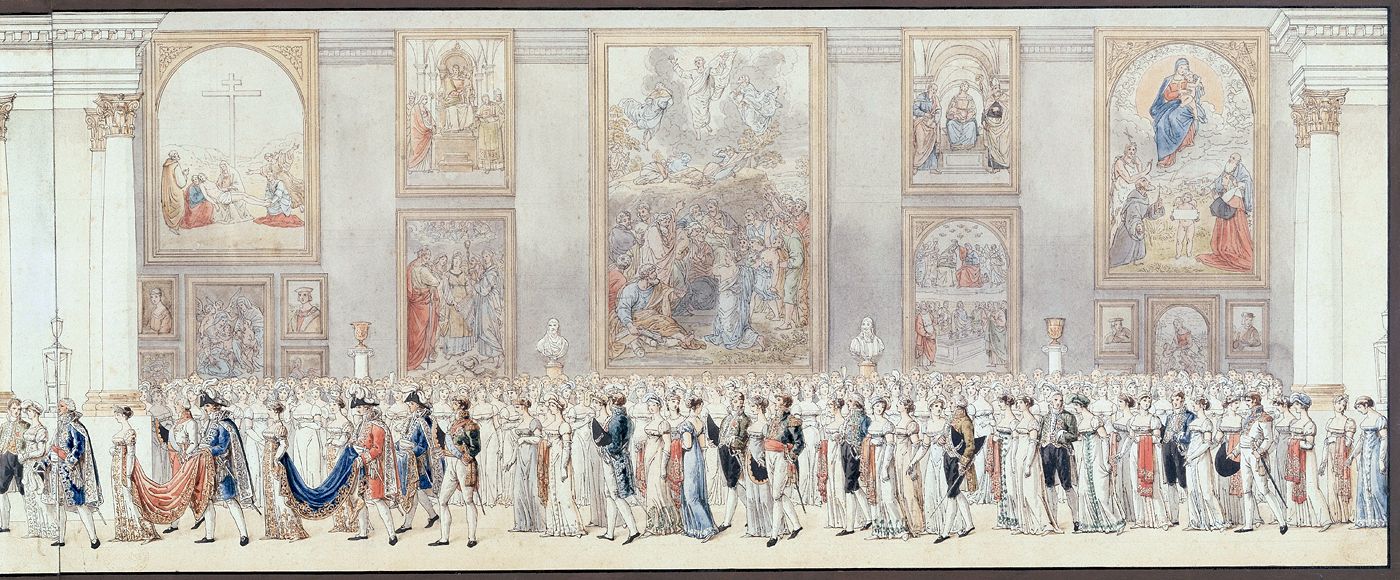
Artworks are exhibited in the waterfront gallery – on the Seine side – then Pierre Fontaine rearranged Anne of Austria’s winter apartments and extended this part of the museum between 1806 and 1817 in the south wing of the Square courtyard. From 1812, the room of the Caryatides accommodates the Borghese collection.
Regularly and despite the arrangements, people complain about the lack of light to fully appreciate the collections. Zenith openings are pierced, mirrors are added to reflect the light, but you still have to choose your hours to visit and appreciate the treasures of the Napoleon Museum. Anyone can access it. The museum is open to the public on Saturdays and Sundays, but foreign visitors can enter it on other days of the week by simply showing their passport. The English do not fail to do so following the Peace of Amiens and – if Europe is offended and scandalized by the spoliations carried out by the French – it is clear that the ambition of a universal museum makes the Louvre during the reign of Napoleon I, the most beautiful museum in the world.
Pascal Torres, curator in the Graphic Arts department of the current Louvre museum readily admits:
The Napoleon Museum, at the fall of the Empire, had become the largest museum in the universe, which no museum will ever be able to match in human history, not even the Louvre today.
But as the saying goes, ill-gotten gains never prosper. And the dream once embodied of making the Napoleon museum the largest museum in the world collapsed at the same time as the Empire. After Waterloo in June 1815, there was no longer any question for France of keeping the wealth that it had stolen for nearly 20 long years. The owners rightly demand the return of their precious treasures. In July 1815, diplomats and politicians from different countries engaged against France were in Paris to organize the return of national artworks.
The Paradox of Restitution
Numerous correspondence testifies to the fascination that the Napoleon Museum arouses in all visitors, such as this Englishman who affirms that “the mere visit of this museum rewards you for a trip to Paris. Because everyone admits it, it is convenient and pleasant to be able to admire in one placeso many masterpieces and that without being rushed by a guide as is the case in most European galleries.
Guillaume de Humboldt (1767 – 1835) is not the last to let it be known. This former Prussian Ambassador in Rome was sent to Paris in July 1815 to organize the repatriation of Prussian artworks; he is full of praise for the museum. To his wife he wrote:
I have already written to you, I believe, that every day as much as possible I go to the museum. Until now, I have only taken care of the statues. There is really a lot that I had never seen, especially coming from Villa Albani.
Or :
It is endless pleasure and my only pleasure so to speak here.
Better! The diplomat entangled in heated negotiations with the French – let us not forget that Dominique Vivant-Denon (1747 – 1825), director of the Napoleon Museum, then fought tooth and nail to keep as many foreign artworks as possible in this museum which he loved so much – the Prussian diplomat, whose mission is to repatriate Prussian artworks, tells his wife that at the same time he is pacing up and down the galleries of the museum, “there is a room here which is being prepared for the Pallas de Velletri and it is the most beautiful room in the museum.” What an irony! One of those who must empty the museum of part of its collections admires the Louvre in the making!
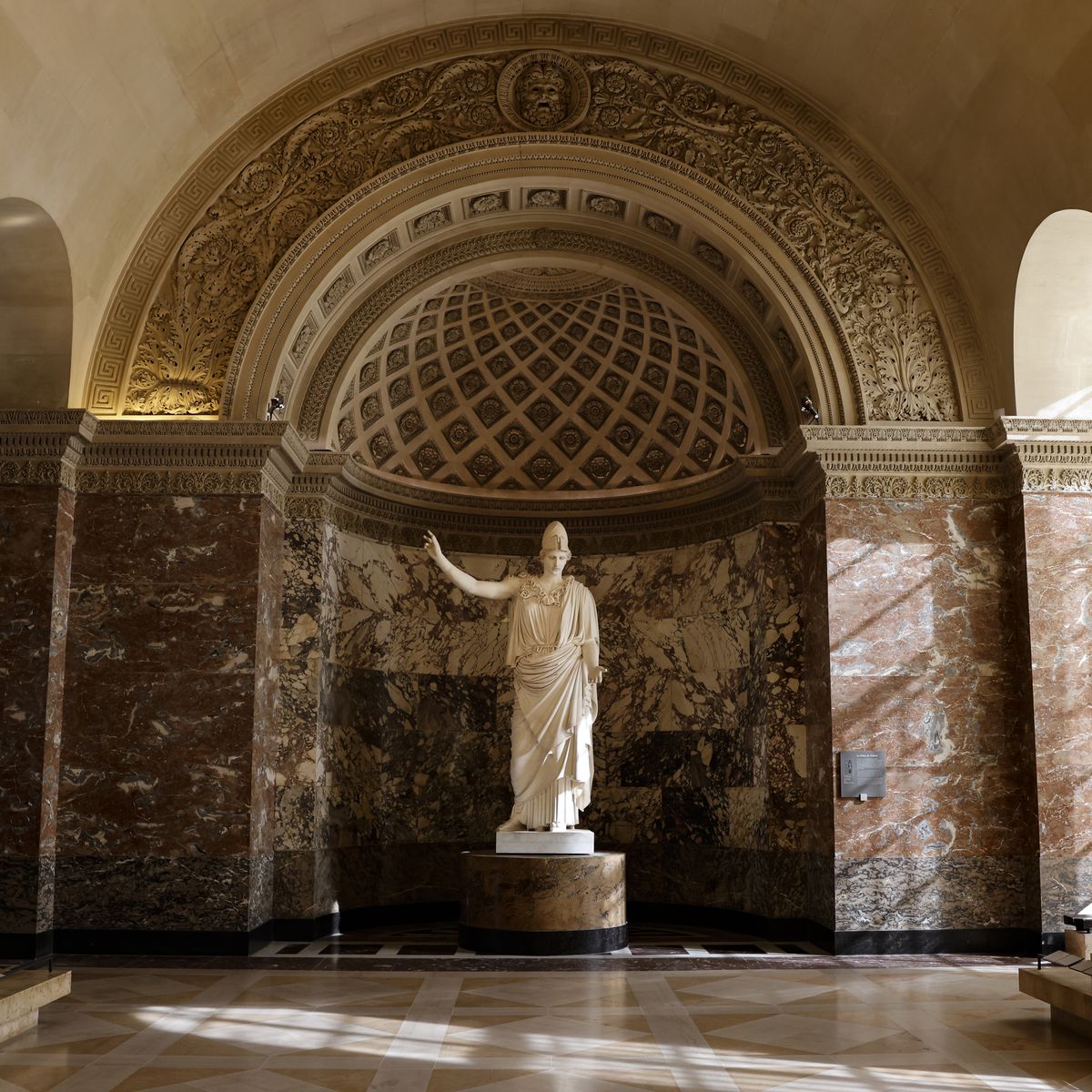
There is absolutely no doubt about the admiration and aesthetic emotion that the Musée Napoléon aroused in visitors until 1815. The gathering of so many masterpieces moves and transports absolutely all those who bear witness to them. The model of this museum is beautiful, it is obvious. But the price to pay to achieve this is decidedly too high.
If bringing together such a collection in Paris requires depriving so many other places of their arts, then it is better to give up this pharaonic project. In 1815, the most recurring arguments advanced that Italians and Germans love art so much that depriving them of it would be criminal. Conversely, the French are criticized for having no sensitivity in this area – proof of this is that we do not see any, it is claimed, visiting the museum and that they only like to own what all Europe agrees to consider exceptional. Nothing is spared to these arrogant French people who are more satisfied with the vanity they derive from their museum than with the beauty they should be moved by. Severe criticism relayed everywhere.
Yet this centralization of so many European masterpieces in the same place, unique in history, suddenly upsets the awareness that countries have of their own heritage. The European countries looted by the French repatriate their cherished artworks and ask themselves: should we return to their exact location the artworks that disappeared for a time? Should we not try, as at the Louvre, to centralize the most beautiful pieces in a few large cities of the country so that the greatest number can see them?
This spectacular impression of universalism which was the golden age of the Louvre so marked the spirits that it inaugurated a new way of preserving, exhibiting and admiring the arts in the various European countries. Little by little, the idea of large museums with a universalist ideal grows and opens the way to the creation of those we know today. If the Napoleon Museum is in no way the instigator of this ancient craze for the collection of works of art, it was spectacular and traumatic enough for the stolen countries to put the enhancement and protection of their heritage at the center of their cultural concerns.
We who have missed – for nearly 200 years – this unique experience in Paris, we still have the chance today to be able to visit with delight the incredible collections of the Louvre , recognized by all as one of the most beautiful museums in the world. An inestimable luxury that no one should deprive themselves of.
Marielle Brie de Lagerac
Marielle Brie de Lagerac est historienne de l’art pour le marché de l’art et l'auteure du blog « L'Art de l'Objet ».